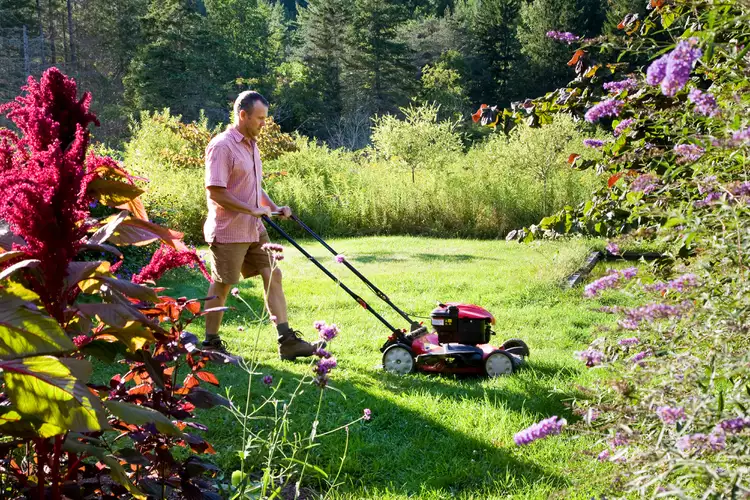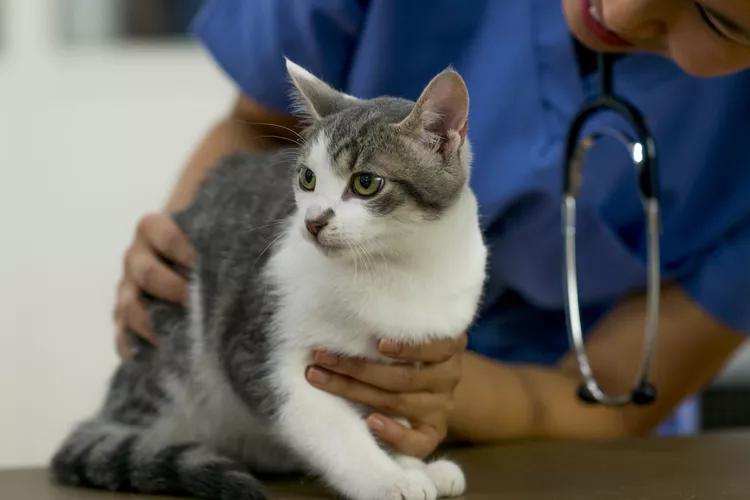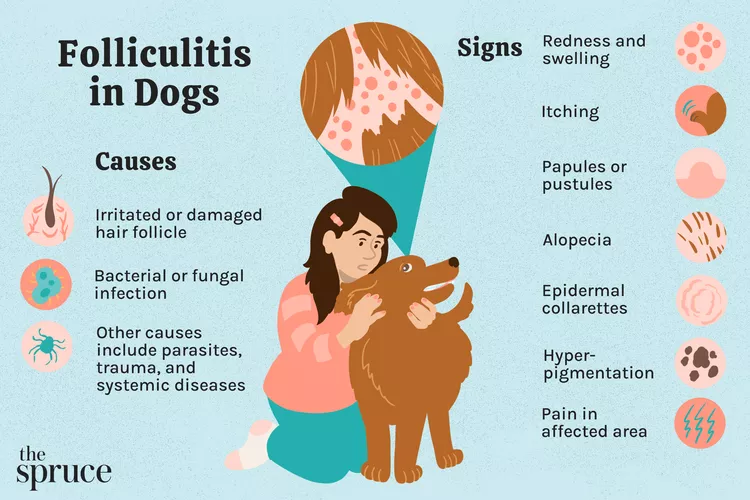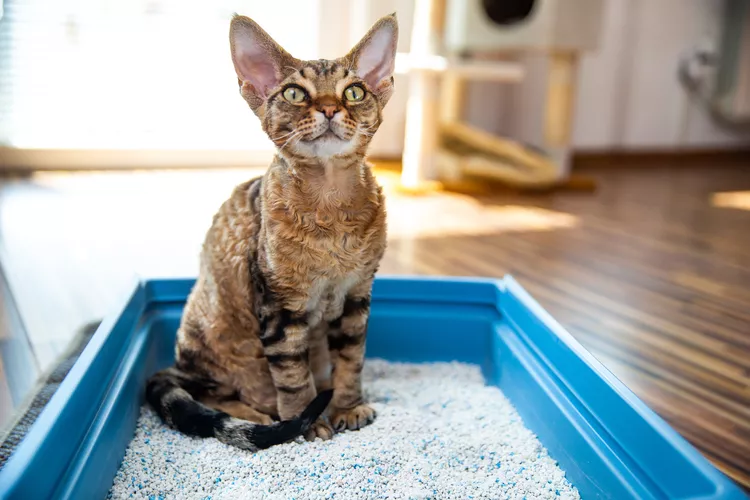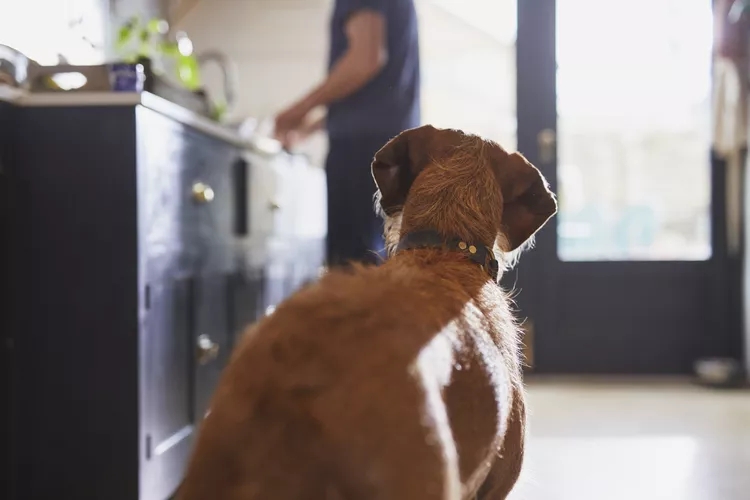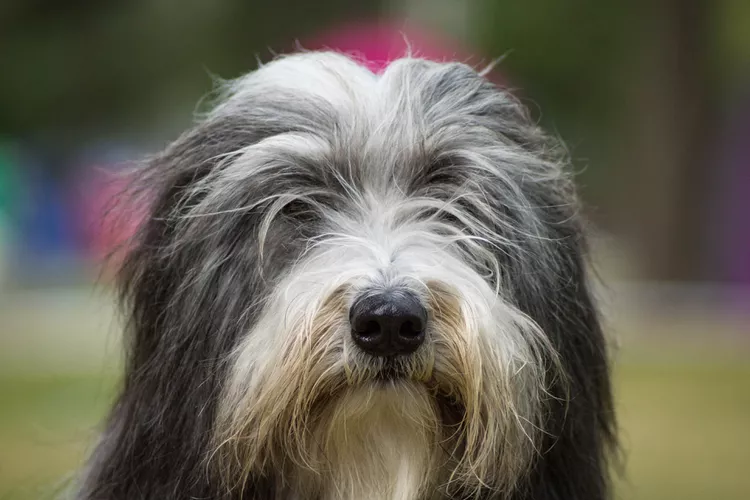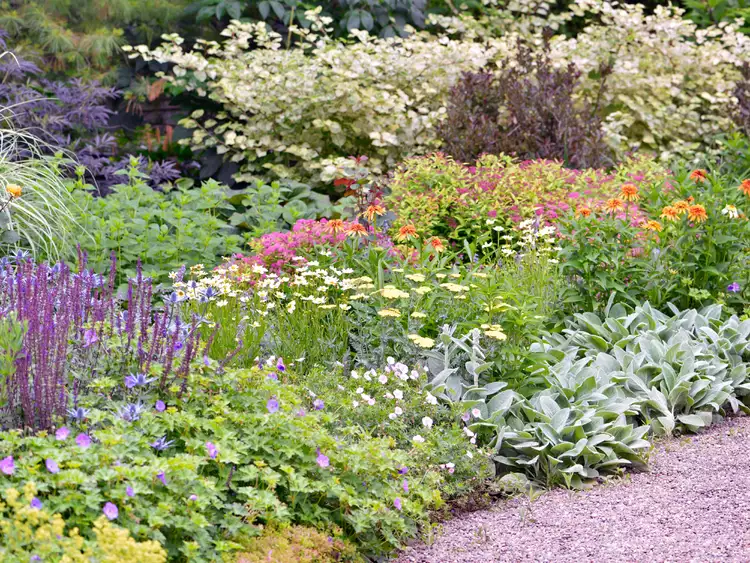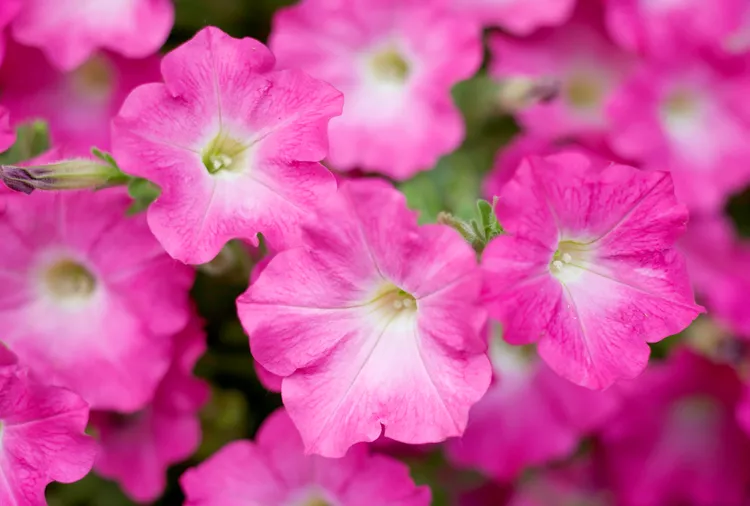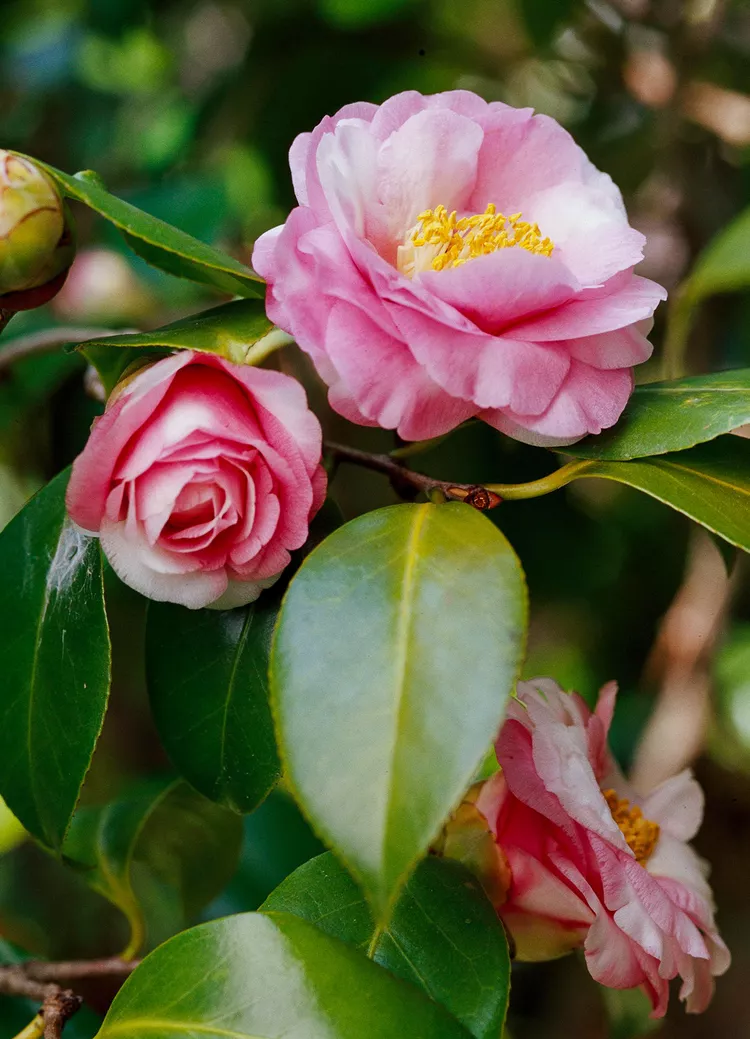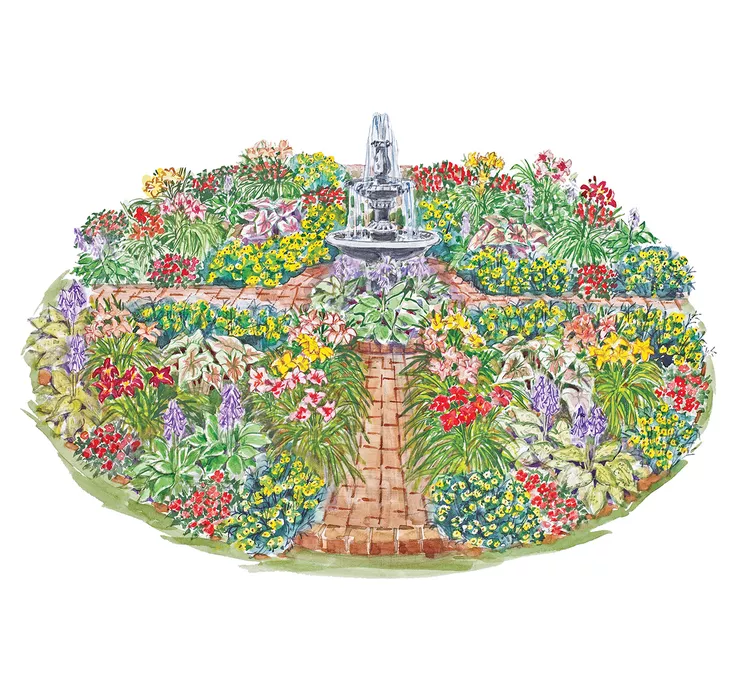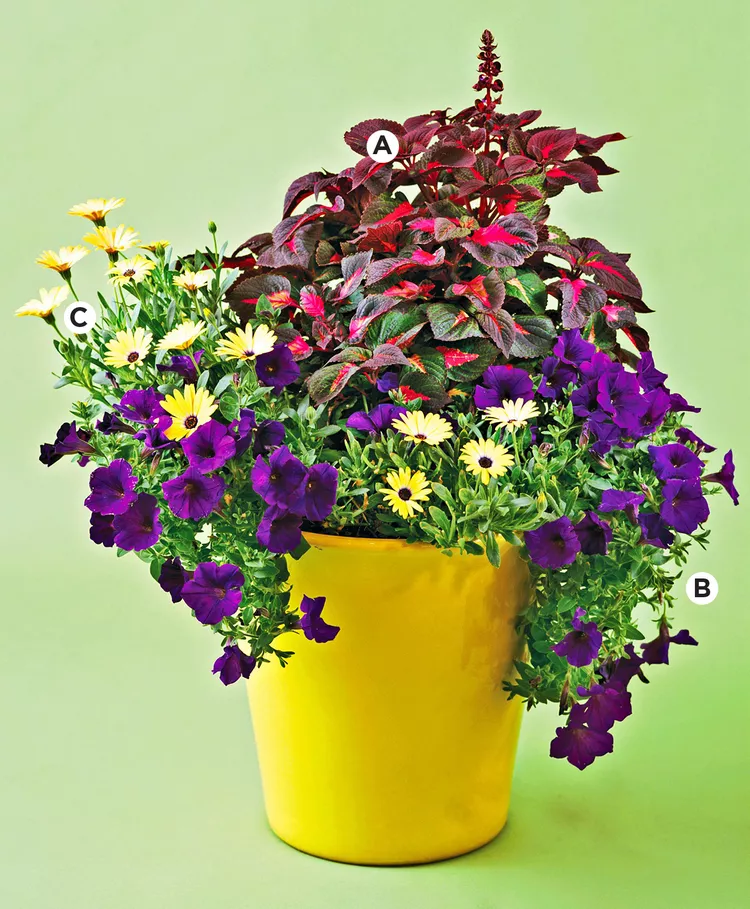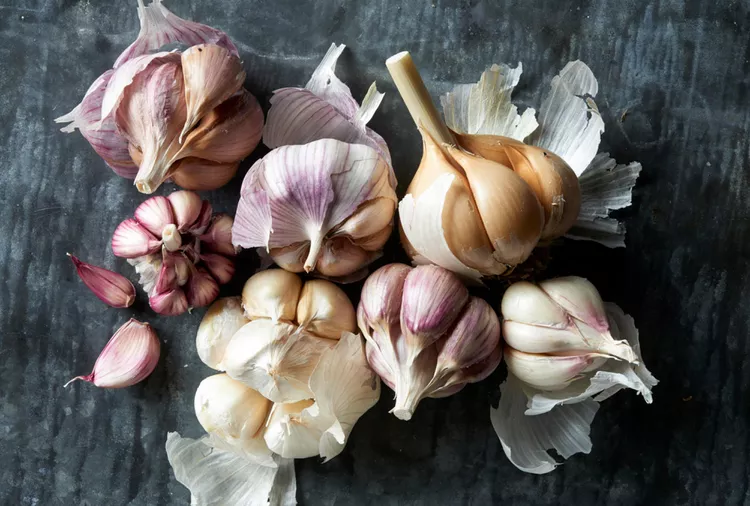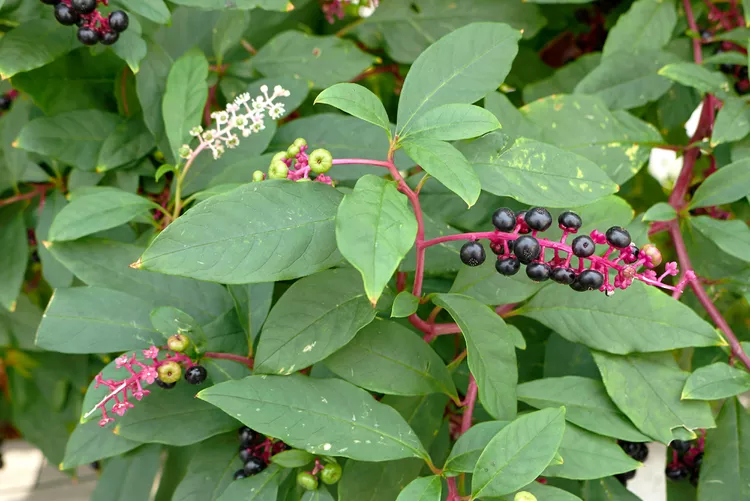Mow your yard at the right time for a host of benefits. From healthy turf growth to less lawn maintenance, timing matters when it comes to mowing. Lawn grass responds to mowing by using available resources to push up new growth and lengthen leaf blades. Mow at the right time for your turf, and it is more likely to form a dense carpet of self-sustaining grass.
When to Mow Your Lawn
Timing is influenced by the grass itself and factors external to the lawn grass; weeds, neighbors, and allergy sensitivity also play a part in the right timing. Use this summary to know when to mow and—just as important—when not to mow.
1. Follow the one-third rule.
Lawn grass grows best when no more than one-third of the length of the leaf blades are cut at a time. For example, if your mower deck is set to 3 inches, cut the grass when it is 4 ½ inches tall. Removing more than one-third of a grass plant’s foliage causes stress and limits root growth, resulting in a weaker plant.
Each turf species has an optimal cutting height. Be sure your mower deck is set to the best height for the type of grass you are growing.
If your turf gets overly long, reduce its height to the desired level over a couple of mowings. Aim to never remove more than one-third of the leaf mass at a time.
2. Mow at midday.
Mow grass when the leaf blades are completely dry—typically between 10 a.m. and 6 p.m. Midday mowing ensures morning dew has evaporated from the blades. Be sure to complete mowing by early evening to avoid evening dew settling on the turf, leading to clumps of cut grass.
3. Mow before the weeds set seed.
Time mowing to control weeds by mowing them off before they set seed. Weeds with tall seed heads, such as dandelions and plantain, can be controlled, but not eliminated, by mowing. When mowing for weed control, you may be minimally cutting the grass. The grass may not need to be mowed according to the one-third rule, but it is helpful to the overall health of the turf if you mow anyway, cutting the weeds before they set seed.
Mow before the grass flowers.
Grass pollen is the cause of many allergy symptoms. If you battle outdoor allergies, aim to cut grass before it gets tall enough to flower. Most lawn grass species flower in late spring on stems taller than the standard lawn height. Avoid an allergy response to grass pollen by regularly maintaining grass at the standard mowing height for the species.
Consider your neighbors.
Most lawn mowers are noisy. Consider your neighbors when mowing, and avoid mowing in the early morning and late evening. Also, be sensitive to outdoor gatherings. Delay mowing if your neighbors are enjoying their outdoor space.
When Not to Mow Your Lawn
Avoid getting the mower out in these situations.
1. Don’t mow when the grass is wet.
Wet grass does not cut cleanly. Mower blades tend to make ragged, rough cuts that leave the lawn uneven and tinged brown in some areas. In addition, wet lawn clippings fall on the lawn in clumps that can smother grass.
2. Don’t mow soon after applying herbicide.
Adjust your mowing schedule so you mow three or four days before applying herbicide, and then don’t mow again until three or four days after the application. Mowing is a form of stress for lawn grass, and so is herbicide application. Cutting the grass several days before applying herbicide gives the grass ample time to recover before the chemical is applied. Wait several days after the application to give the product time to move into the weeds’ root systems.
3. Don’t mow new sod.
Wait several weeks before mowing new sod, sprigs, plugs, or stolons. Test the new turf by trying to lift it out of the soil. If it is firmly rooted in the native soil, you can mow. It’s a good idea to let the new grass grow to the high end of its recommended range before the initial mowing.
4. Don’t mow with dull blades.
Dull mower blades tear the grass instead of cutting it cleanly, resulting in injured leaf blades that require 40–60 percent more water and nutrients to resume growth than grass cut with sharp blades. Sharpen mower blades at least twice a year to keep them in excellent condition.
5. Don’t mow a newly seeded lawn.
Wait until a newly seeded lawn is at least 3 inches tall before mowing. Remove ½ inch or 1 inch of growth at the first mowing. Mow regularly to promote a thick stand of grass with a healthy root system.
6. Don’t mow a dormant lawn.
Dry, brown turf is likely dormant due to summer conditions or cold temperatures. Dormant turf is growing very minimally. There is no need to mow it until it turns green again. If weeds rise above the turf, raise the mower deck to cut the weeds, leaving the grass untouched.
